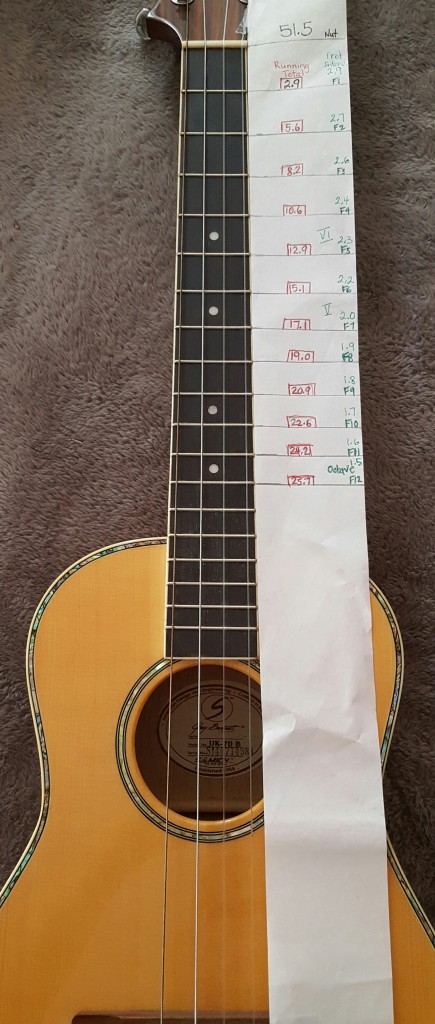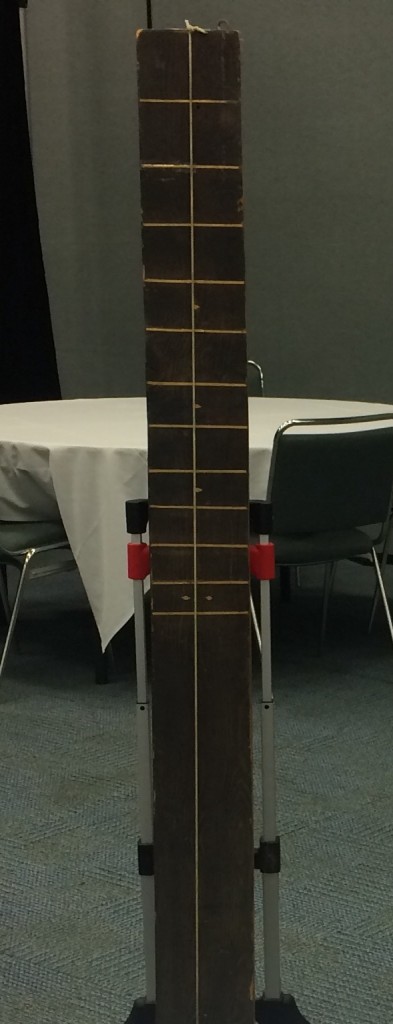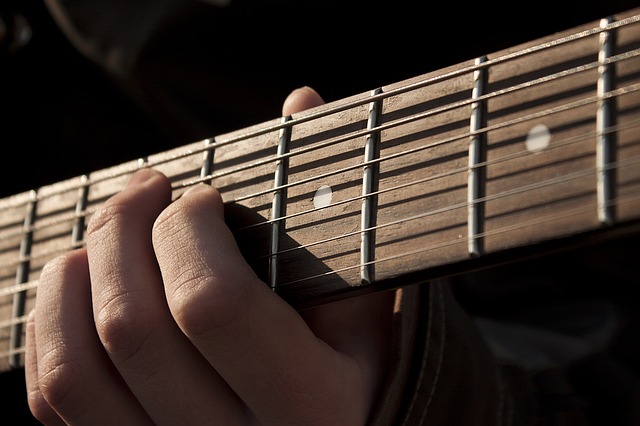The Rule of 18 – It’s Something to Fret About
4 Min Read • Common Core
Have your ever sat down and watched a violinist play? No, I mean REALLY watched them play? You know, studied their fingers, hand position, and tried to make sense of it all? It’s simply amazing how their brain can send messages so quickly to those digits. Watching musicians’ hands move has always been a fascination of mine, and goodness knows I’ve spent a lot of time observing from my seat in the orchestra.
However, the one thing I never understood was how they knew where to place their fingers. There is an old joke among orchestra wind players: What do you get a bad string player for his/her birthday? … A set of frets! That’s right, they have no frets to know where to place their fingers. What pretty awesome listening skills they must have to be a proficient player, right? Okay, then why do guitars, ukuleles, and some electric basses have frets? Is it because these instruments are easier to play and don’t required more accurate listening skills? I don’t think so! As my big brother would tell me (chuckling at his own wittiness) when I repeatedly inquired about this, “Stop fretting, Mary, it’s all musical mathematics!”
<h3 “>Why fret over it?
The reason some instruments are fretted and some are not basically boils down to tradition. The curved neck of the violin family instruments and the techniques (slides, glissandos, double-stops) required of the player’s dexterity lend themselves to a smooth fretless fingerboard.
One the other hand, stringed instruments, such as guitars, have flat fingerboards and often more than 4 strings. The frets serve as tactile markers to aide in accuracy when complex finger patterns are required to produce the proper combination of notes on the strings.
Well then, what does all of this have to do with your classroom and how can you use it with your students? Luthiers use a mathematical formula to calculate the placement of the frets that can easily be turned into an exciting classroom project or a STEAM lesson with your guitar/ukulele club!
When the Rule of 18 really isn’t 18!
The Rule of 18, as it is called, is actually the Rule of 17.82. However, for the sake of mathematical ease, many people round 17.82 to 18. In terms of your students, I would suggest using the rounded number 18 for younger children, 17.8 for middle school, and 17.82 for older kids. But you know your students best, so meet them where they will be most successful! The process of calculating the position of the frets is very mathematical and precise. If you are using 18 as your number to divide by, please note that there will be a very slight offset in the numbers, but not significant for our purpose. Once your students understand the algorithm, they can create their own instruments that will play very well in tune.
All you need is math
Before we put our math hat on, there are a few parts of the instrument you must know first in order to complete this project. The bridge, nut, and fingerboard being the most important. In order to make this more understandable, you can download a copy of the lesson plan here and a calculation table here. A strip of adding machine tape works really well for recording your measurements. You can then hold it up to the actual instrument to compare your work.
Break out that calculator and let’s get started!
Process: Measure the distance from the bridge to the nut of the instrument. We will call this measurement the scale length (SL). For this example, I am using a baritone ukulele (see photo) and measuring in metric (51.5cm). I will also be rounding out to the first decimal point in my calculations. Now that you have the SL, let’s take it from the top:
Fret 1 (F1) = 51.5 (SL)/17.82 = 2.9cm
Fret 2 (F2) = 51.5 (SL) – 2.9 (F1) / 17.82 = 2.7cm
Fret 3 (F3) = 51.5 (SL) – [ 2.9(F1) + 2.7(F2) ] / 17.82 = 2.6
*Please note that at this point we are now adding the total of the previous fret intervals (Running Total) and subtracting that total from the SL, before dividing. Some of you might be thinking it would just be easier to remeasure the scale length to the last fret marking with each step, but doing so will actually throw off your calculations. Always measure the new fret from the nut down!
Fret 4 (F4) = 51.5 (SL) – [ 2.9(F1) + 2.7(F2) + 2.6(F3) ] / 17.82 = 2.4cm
Continue this process until you get to fret 12. Fret 12 should be your half way point on the fingerboard. Placing your finger on the 12th fret is the location where the string will vibrate twice as fast, thus producing a sound that is an octave higher than the open string.
Fret 12 (F12) = 51.5 (SL) – ( sum of F1 to F11) / 17.82 = 1.5cm
You can check your work by calculating 51.5(SL) /2 = 25.75. Checking this against my running total for F1 thru F12 = 25.74. Not too shabby – only 0.01 off!
There, you did it! What a challenging way to learn about music and math all rolled up into one. If you’re up for it, you can create a strum board (photo) as a class project to test their knowledge:


If you have any questions, please view my EdCloset On-Air Video recorded April 25 for a live demo.




